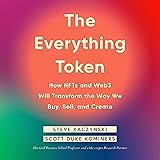A Billionaire’s Bold Bitcoin Price Prediction 2030: Chamath Palihapitiya’s Vision
Imagine, for a moment, sitting at the poker table of global finance, watching the dealer reveal cards that could redefine wealth for an entire generation. Many investors feel this way as traditional financial systems grapple with unprecedented challenges. In a landscape often dominated by fleeting trends and sensational headlines, the insights of seasoned, successful investors like Chamath Palihapitiya offer a refreshing dose of reality. As discussed in the insightful video above, this multi-billionaire venture capitalist has a unique perspective on the future of Bitcoin, particularly its potential trajectory towards 2030, that every serious investor should consider.
Chamath, known for his prowess in tech investments and a no-nonsense approach to markets, brings a unique blend of experience and foresight to the discussion. Unlike many who speculate from the sidelines, Chamath has a history with Bitcoin stretching back to its early days. His journey provides context for his current views, evolving from an early adopter to a strategic observer of its role in a changing global economy.
Chamath’s Bitcoin Journey: From “Schmuck Insurance” to Strategic Holding
Chamath Palihapitiya famously termed Bitcoin “schmuck insurance” years ago, a moniker that suggests a hedge against the incompetence of central banks and governments. He wasn’t just talking; he was acting. In 2013, when Bitcoin was largely unknown to the mainstream, he invested a significant sum, acquiring what he estimates was “almost 5% of all Bitcoins” at a remarkable basis of “about 80 bucks a coin.” This early foresight underscores his ability to spot transformative assets before they hit the global stage.
Interestingly, Chamath hasn’t actively bought more Bitcoin since that initial investment. Instead, he strategically moved most of his holdings to a company that uses it for trading purposes and other strategies, largely for “safety and security and peace of mind.” This decision highlights a pragmatic approach to managing highly volatile assets: he believes in its long-term potential but prefers not to deal with the day-to-day complexities of direct custody and trading himself. However, this early and substantial investment firmly cements his position as a credible voice in the cryptocurrency space, making his Bitcoin price prediction for 2030 all the more compelling.
The “Ghetto Phase”: Why Bitcoin Remains a Speculative Instrument (For Now)
While bullish on Bitcoin’s long-term prospects, Chamath is blunt about its current state, describing it as still being in its “ghetto phase.” His reasoning is straightforward: Bitcoin, despite its growing adoption, remains “too speculative for it to be reliable” as a replacement for fiat currency. He points out the stark contrast in volatility, noting that Bitcoin is “nine sigma more volatile” than the US dollar. Imagine traditional currency markets where a “5% move” is newsworthy and takes years to unfold; in Bitcoin, a “2,000 basis point move” (or 20%) can happen in a mere half-hour.
This extreme volatility, Chamath argues, prevents Bitcoin from becoming a critical pillar for businesses and large financial institutions. Instead, it pushes it into a “ghetto of day traders and speculators,” where rapid price swings are opportunities for short-term gains rather than a stable store of value or medium of exchange. For Bitcoin to mature and fulfill its potential, it must transcend this speculative phase, attracting long-term holders and offering a more predictable value proposition. The question then becomes: how does it escape this current state to achieve a more reliable future, potentially shaping its Bitcoin price prediction for 2030?
Escaping the Ghetto: Two Paths for the Global Economy
Chamath paints a vivid analogy of the global economy “driving slowly… towards a top of a cliff,” soon to accelerate downwards into a “huge brick wall.” He posits that there are only two primary ways for the world to avoid this impending collision, largely caused by unchecked monetary expansion and fiscal irresponsibility. These paths will critically influence Bitcoin’s evolution and its ultimate value.
The first path is the “good solution”: world governments pivot to a more responsible monetary system, introducing “inefficiency and cost” to “inflate our way out of it” responsibly. This would involve a managed inflation to de-lever debt without causing total economic collapse. However, history suggests that governments often struggle with such discipline when faced with hard choices. The second, more ominous path, involves continued “magic money printing” leading to “total fiat debasement,” where currencies lose significant purchasing power due to excessive supply. It is this second path, Chamath suggests, that creates the ideal conditions for Bitcoin’s true emergence.
Bitcoin’s Binary Future: Zero or Millions by 2030
For Chamath, Bitcoin is a “very binary investment”—it’s “either zero or it’s millions.” He dismisses the short-term fluctuations, emphasizing that whether it moves from $80 to $8,000 or dips to $3,000 before surging, these movements are irrelevant to its fundamental, long-term proposition. The crucial factor is “path dependence”: if the global economy appears destined for “path two” (fiat debasement), Bitcoin will “really emerge” as a flight to safety.
He reveals a significant shift in his probability assessment. In 2013, he estimated the chance of Bitcoin becoming truly valuable was around 1%. However, given the “irresponsibility we’ve seen from the USA, from these governments in the past number of years,” that probability has increased dramatically to “5 or 10%” by 2030. This isn’t just about price; it’s about Bitcoin creating a “quasi gold standard”—a “Gold 2.0” that replaces traditional methods of value transfer. Unlike physical gold, which is often controlled by central banks, Bitcoin is “owned by everybody,” its value determined by its participants. This decentralized ownership is key to its appeal as a hedge against governmental monetary mismanagement, profoundly impacting any Bitcoin price prediction for 2030.
The Role of Governments and the Rise of a Bottom-Up Standard
While the idea of a return to a gold standard is often floated as a responsible monetary solution, Chamath is highly skeptical of its feasibility. He argues it would be “almost impossible” for governments and central banks to agree on such an instrument or an exchange rate. Imagine a scenario where global powers like Russia, the US, and China must unanimously agree on how much gold backs their respective currencies, and then trust each other’s accounting. The geopolitical complexities alone make this a monumental, if not impossible, task.
Yet, a “quasi form of gold standard” could still emerge, not from top-down governmental decree, but “bottoms up” from individuals and market participants. If people collectively decide to adopt Bitcoin as a universal store of value and medium of exchange, driven by a lack of trust in traditional fiat currencies, then “it’s a done deal.” This collective, decentralized adoption would empower individuals with a form of monetary sovereignty, sidestepping the political gridlock of central banks and offering a truly independent alternative. This trajectory, which could unfold over the next decade, underpins Chamath’s conviction in the extreme long-term potential of Bitcoin.
As we look towards 2030, the macroeconomic environment continues to shape the narrative around digital assets. The question isn’t merely how high Bitcoin might go, but whether it will fulfill its role as a fundamental hedge against potential financial instability. Chamath Palihapitiya’s insights underscore that the ultimate Bitcoin price prediction for 2030 hinges not just on technological adoption, but critically on the path global monetary policy takes in the years to come.







